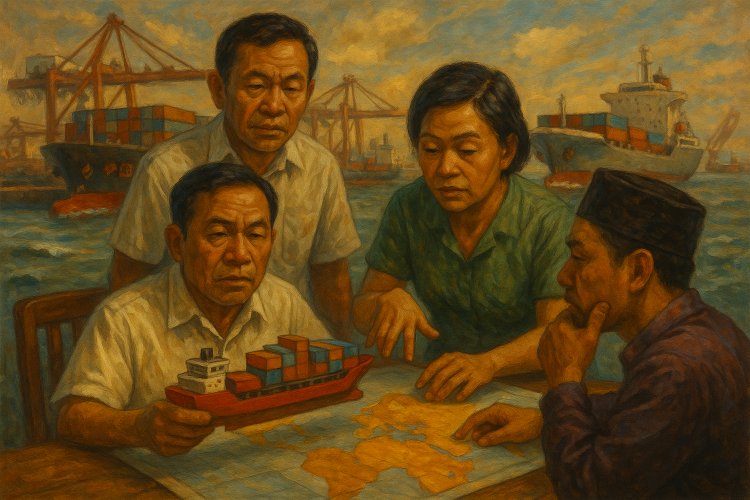Trading Sovereignty: How ASEAN Faces the Consequences of China’s Debt and U.S. Retrenchment
ASEAN is facing an economic squeeze between China’s massive industrial surplus and U.S. trade redirection. As cheap Chinese goods flood the region and American tariffs reshape global routes, ASEAN must rethink its role before becoming collateral in a global economic struggle.

In recent years, ASEAN has found itself at the intersection of two major economic forces: China's industrial overcapacity and the United States' evolving trade policies. China's strategy to mitigate its domestic overproduction has led to a surge of exports to Southeast Asia, while the U.S. has implemented measures that indirectly influence trade dynamics in the region.
China's industrial sectors, particularly in manufacturing, have produced goods exceeding domestic demand. To address this surplus, China has increased exports to neighboring regions, with ASEAN becoming a primary destination. This influx of Chinese goods, often priced competitively due to state support and economies of scale, has posed challenges for local industries within ASEAN, leading to concerns about market saturation and the viability of domestic producers.
Concurrently, the United States has adjusted its trade policies, including the imposition of tariffs on certain Chinese products. These measures have prompted China to redirect its exports to alternative markets, with ASEAN countries absorbing a significant portion of these goods. While this redirection offers ASEAN consumers access to affordable products, it also intensifies competition for local manufacturers, potentially undermining regional economic stability.
The combined effect of China's export strategy and U.S. trade policies places ASEAN in a complex position. On one hand, the region benefits from increased trade activity and investment opportunities. On the other, it faces the risk of becoming overly reliant on external economic forces, which could compromise its long-term development goals and economic sovereignty.
To navigate these challenges, ASEAN must adopt a multifaceted approach. This includes implementing policies that protect and promote local industries, such as enforcing anti-dumping measures and investing in sectors where ASEAN holds competitive advantages. Additionally, enhancing intra-regional trade and cooperation can bolster economic resilience, reducing dependence on external markets.
Furthermore, ASEAN should engage in strategic dialogues with both China and the United States to advocate for fair trade practices and ensure that regional interests are considered in broader economic policies. By fostering transparent communication and mutual understanding, ASEAN can work towards balanced trade relationships that support sustainable growth.
In conclusion, ASEAN's position between China's overcapacity challenges and U.S. trade policies presents both opportunities and risks. By proactively addressing these dynamics through strategic policy-making and regional collaboration, ASEAN can strengthen its economic foundation and assert its role as a pivotal player in the global economy.